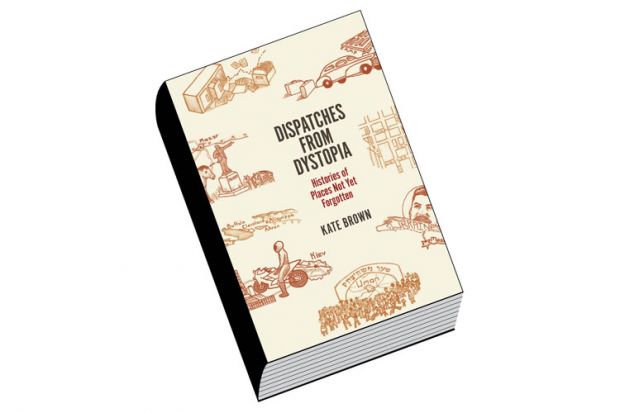It is a truism that one person’s earthly paradise is another’s hell on earth. This is especially true of allegedly utopian societies, as exemplified in the 20th century by Hitler’s Nazi Germany, Mao’s China and Stalin’s Soviet Union.
There are, however, few debates about the dystopian or anti-utopian qualities in the places visited by intrepid historian Kate Brown. Stops on her itinerary include the ghost town of Chernobyl in Ukraine, site of the world’s worst nuclear plant disaster in 1986; the basement of a Seattle hotel that still contains the belongings of Japanese-American citizens sent in 1942 to rural internment camps; Uman, Ukraine, where Hasidic Jews from around the world gather to celebrate Rosh Hashana in commemoration of a Nazi massacre of the town’s Jewish population; the small city of Kyshtym in the southern Urals, where radioactive pollutants from a nearby early plutonium plant have damaged lives; Karaganda, a Russian gulag city of mines in Kazakhstan – and its surprising American counterpart of Butte, Montana, an equally miserable mining community and, later, the country’s largest environmental Superfund clean-up site; and Brown’s hometown of Elgin, Illinois, in the industrial rust belt, where “rustalgia” has taken hold as long-time residents embrace their declining locale. Elgin is where Brown acquired her lifelong interest – even obsession – with wastelands, becoming, in her words, “a professional disaster tourist”.
Brown, an award-winning historian, is no ordinary tourist, and this book contains the bones of two of her earlier works, on Russia and Ukraine. Yet she repeatedly concedes that, for all her expertise and travel preparations when researching those books, she often missed larger points.
Each of the places that she visits has endured catastrophic events, and she sees them not “as neutral containers of human interaction” but rather as “dynamic agents in their own right”. She urges every serious travel writer to go beyond conventional archival materials – themselves often erratic and unreliable – and to include their own physical presence in their accounts. Travelling, she says, is “a form of negotiation, an unravelling of certainties and convictions and a reassembling of the past”.
Her deliberations, as a professional historian, on how much she should put herself into this book are refreshing. When writing her doctoral dissertation, she was warned that first-person intrusions might ruin her career. She has since walked a fine line between hiding behind her subjects and intruding too far into their stories. Happily, this book resembles neither Martin Duberman’s Black Mountain (1972) nor Edmund Morris’ Dutch: A Memoir of Ronald Reagan (1999), where both distinguished scholars controversially put themselves directly into their histories.
Save for her return to Elgin, Brown is not, she makes clear, searching for her roots. She has no German, Jewish or Slavic familial connections. Indeed, her status as an outsider paid off in post-Soviet society, where more than once she was warmly treated “as an honorary child”, and this perspective allowed for greater insight into her temporary communities.
Dispatches from Dystopia is a remarkable work on fascinating places, and combines the best of historical analysis and travel writing. Despite its melancholic tone, it is a visionary work that deserves a wide audience.
Howard Segal is professor of history, University of Maine, and author of Utopias: A Brief History from Ancient Writings to Virtual Communities (2012).
Dispatches from Dystopia: Histories of Places Not Yet Forgotten
By Kate Brown
University of Chicago Press, 216pp, £17.50
ISBN 9780226242798 and 2828 (e-book)
Published 19 May 2015




